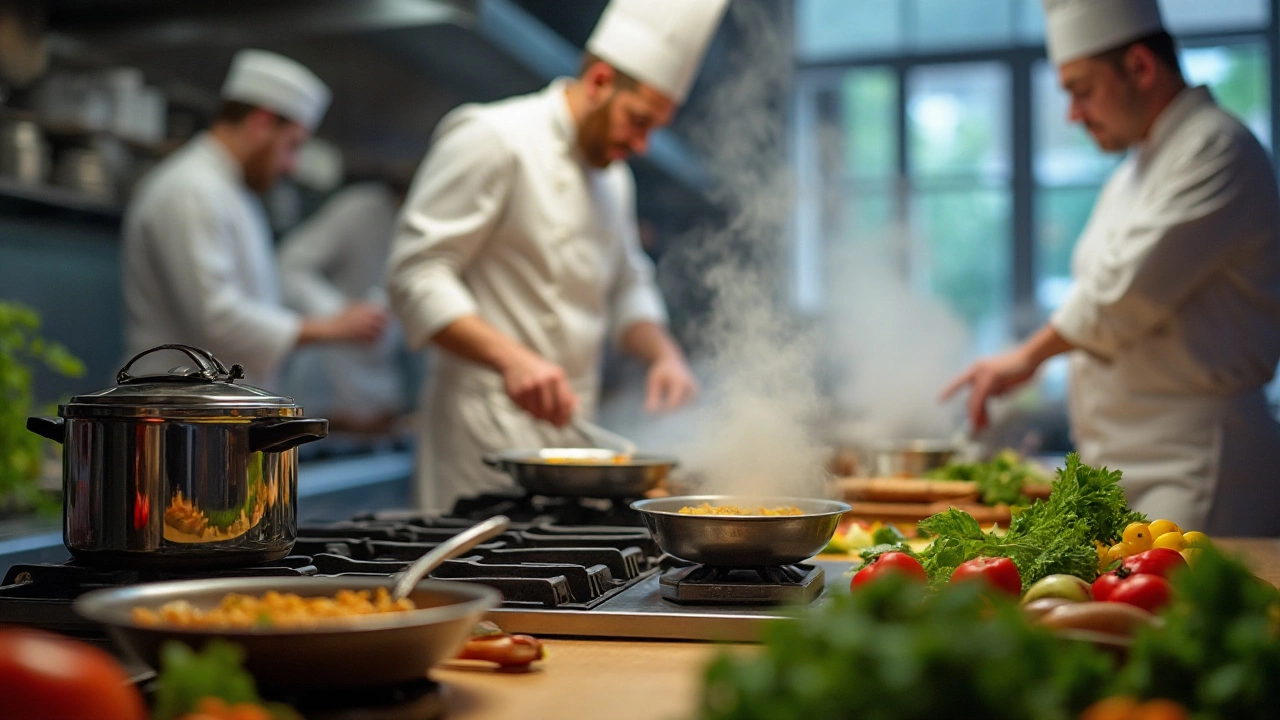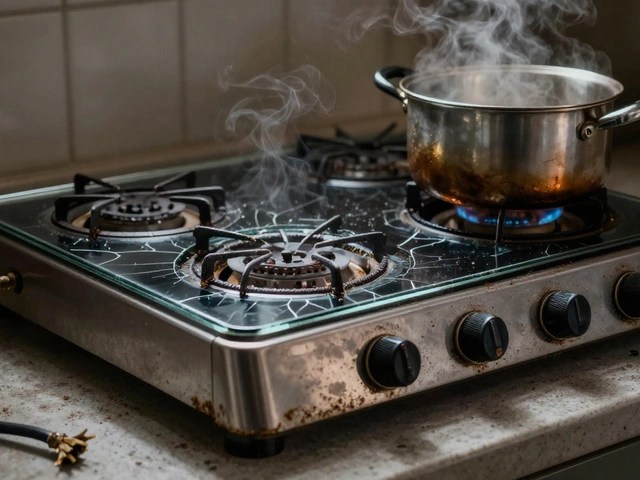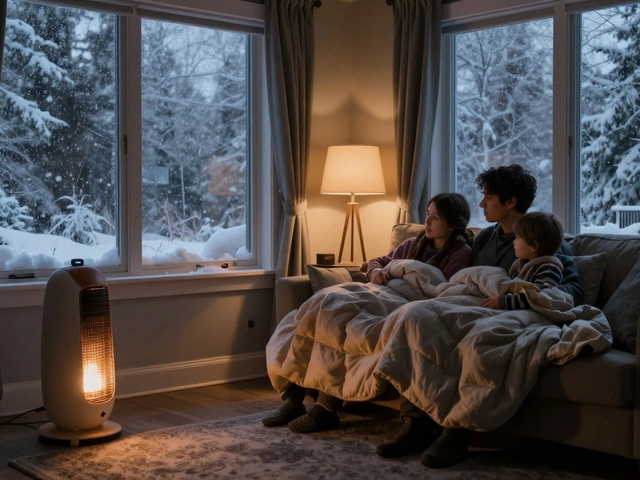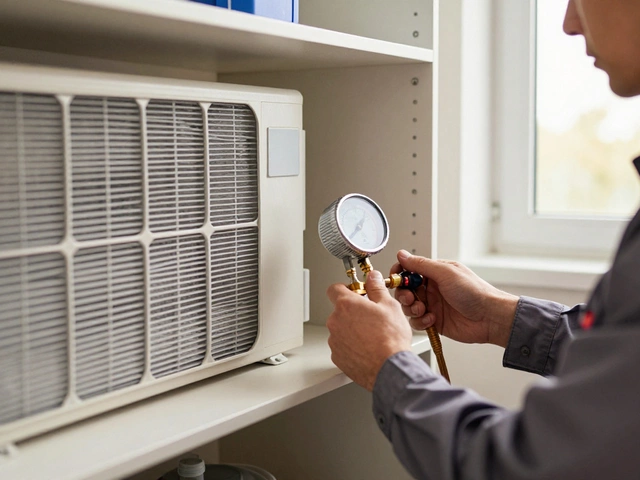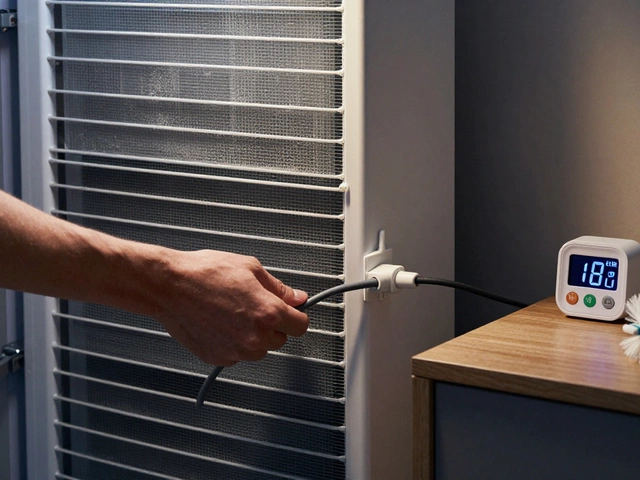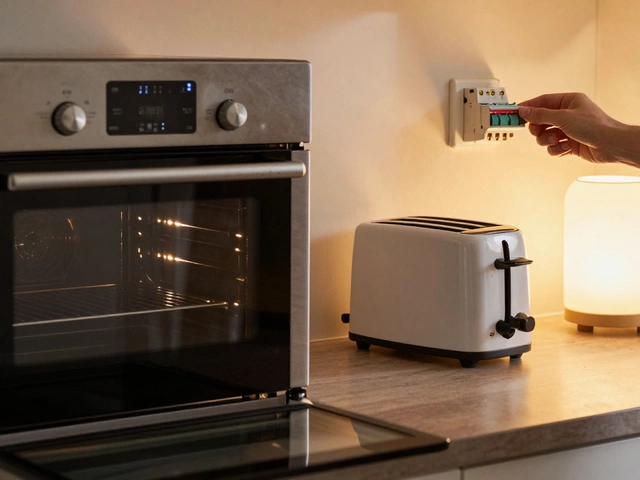Pressure cookers have revolutionized home cooking with their ability to whip up meals in a fraction of the time. Yet, step into a professional kitchen, and you’ll notice that these miracle machines are often missing. So, why do chefs tend to avoid pressure cookers when crafting their culinary masterpieces?
The answer lies in the balance of control, flavor, and tradition. For many chefs, cooking is not just about the end result but the journey along the way. The aromas wafting through the air, the subtle adjustments as flavors meld, these are vital to the profession. In this context, pressure cookers can sometimes feel like taking a shortcut, skipping the dance of cooking that chefs cherish.
- The Pressure Cooker: A Quick Overview
- Why Chefs Avoid Pressure Cookers
- The Art of Cooking With Control
- Preserving Texture and Flavor
- Traditions in Professional Kitchens
- Tips for Home Cooks: Using Pressure Cookers Wisely
The Pressure Cooker: A Quick Overview
Pressure cookers have long been a staple in home kitchens, especially for those who value efficiency and convenience. These handy kitchen appliances work by trapping steam inside a sealed pot, which increases pressure and allows water to boil at higher temperatures. This process significantly cuts down cooking time, often reducing the time by up to two-thirds compared to conventional methods. Not only does this save time, but it can also conserve energy and retain more nutrients in the food, making it a popular choice among health-conscious cooks.
The invention of the pressure cooker dates back to the 17th century, when French physicist Denis Papin developed the 'steam digester', a precursor to the modern design. Despite its long history, the technology behind pressure cooking has seen numerous advancements. Today’s models come equipped with safety features such as locking systems and pressure indicators, which have helped shed the initial reputation of pressure cookers as dangerous kitchen devices that could explode if mishandled.
One major advantage of using a pressure cooker is the ability to tenderize tougher cuts of meat rapidly. With high-heat steam breaking down fibers, even the least expensive beef cuts can become melt-in-your-mouth tender, making this method cost-effective as well. Moreover, pressure cookers can cook a variety of foods, from stews and soups to grains and vegetables, providing versatility that offers ample experimentation for eager cooks at home.
According to the American Institute for Cancer Research, "Pressure cooking is an excellent way to preserve nutrients and vitamins, as minimal water is used, unlike traditional boiling." This not only helps in maintaining the nutritional profile of the food but also keeps the natural flavors intact.
Despite these benefits, chefs in professional kitchens often avoid using pressure cookers. The reason being the lack of control compared to traditional methods. While pressure cooking is quick, it doesn't allow chefs to check the doneness or adjust seasonings during the process. To many chefs, the craft of cooking transcends mere preparation—it’s about engaging with the food and perfecting flavor at each step.
Let’s also consider the technological innovations in pressure cooker models today. They're not just pots that steam food; they are multifunctional devices that can sauté, slow cook, and even bake. This evolution is aimed at climaxing utility in home kitchens. Nonetheless, the sophistication and sense of control that professional chefs seek often bypasses this niche device, indicating a preference for tradition over convenience.
Why Chefs Avoid Pressure Cookers
In busy restaurant kitchens, every tool and technique serves a purpose. Yet, despite the efficiency promised by pressure cookers, these appliances often remain conspicuously absent. One primary reason for this is control. Professional chefs thrive on precision, constantly tasting and adjusting to bring out the best in every dish. The sealed environment of a pressure cooker makes this virtually impossible. Chefs can't tweak seasoning, test texture, or gauge doneness without halting the cooking process entirely. This lack of real-time control can lead to outcomes that might lack the subtlety expected in professional cooking.
Moreover, there's the issue of texture. Many dishes benefit from slow, gradual heating, allowing flavors to meld and ingredients to break down optimally. For instance, a rich, complex stew might need hours of simmering to achieve the ideal tender meat and thickened sauce. The speed of pressure cooking might tenderize meat, but it often at the expense of a nuanced texture and flavor development, leading to foods that feel less crafted and more machine-made.
"Cooking is all about the senses," said renowned chef Thomas Keller. "The sounds, the smells, each one informs every decision you make in the moment."
Beyond texture and control, there's the aspect of tradition. Many chefs carry rich culinary heritages where methods and customs have been passed down through generations. These techniques aren't merely about the best way to prepare food; they're about storytelling, about carrying forward the memories and wisdom of those who cooked before them. Introducing modern appliances like pressure cookers into this context can sometimes feel like compromising those traditions for convenience.
Another point to consider is the uniformity of cooking styles. In a creative environment where innovation is prized, the standardization that pressure cookers bring can seem limiting. Every chef has a distinctive style and approach they impose on a dish, something that’s not as readily apparent when everything is compressed and cooked under pressure. Recipes become templates rather than canvases for expression. Such uniform methods could stifle creativity, making chefs reluctant to rely too heavily on such a shortcut.
Finally, there's the perception of quality. Diners paying for high-end experiences often expect dishes that showcase the full spectrum of culinary skill, from technique to timing. The pressure cooker, however efficient, risks reducing dishes to mere outputs of an appliance rather than a masterful orchestration of chef-led, intuitive cooking methods. This might not matter in a home kitchen, where convenience often trumps artistry, but in professional settings, it's a deal-breaker that keeps pressure cookers largely sidelined.
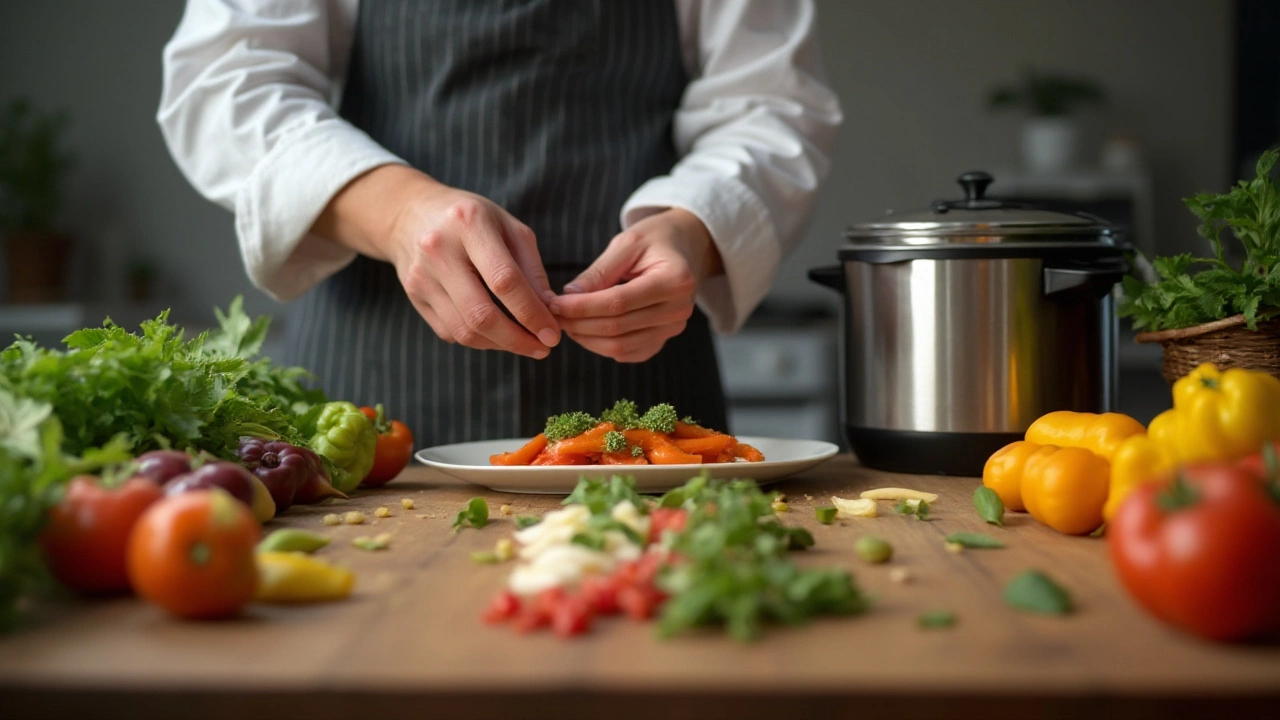
The Art of Cooking With Control
In the culinary world, control over cooking processes is paramount. The chef's art involves a constant, delicate balance of flavors, textures, and techniques to achieve the perfect dish. Traditional methods allow chefs to monitor every aspect, making minute adjustments as needed. In contrast, pressure cookers can limit this level of precision. With the lid sealed, chefs cannot easily peek inside to adjust seasoning or texture until the cooking process is complete. This restriction can be a drawback when working with delicate ingredients or complex dishes requiring nuanced flavor profiles.
Cooking is akin to a dance where timing is essential. The experience allows chefs to feel the dish evolve, adjusting the heat, adding ingredients at just the right moment, and smelling the transformation of flavors. This level of immediacy and interaction is missing in pressure cooking. The sealed environment can result in overconfidence — it is easy to assume pressure will cook everything to perfection. However, this is not always the case, as overcooking can lead to loss of texture, making vegetables mushy or proteins lack a desirable sear.
Additionally, professional chefs often need to cook larger quantities than home cooks, which can be a limitation for most pressure cookers. The constrained space limits the number of ingredients that can be cooked simultaneously, which is far from ideal in a busy restaurant setting. While pressure cookers do well for specific applications, the inability to check and adjust frequently means chefs sacrifice too much control over the final product. The seasoned chef relies on his senses—sight, smell, touch, and even sound—to guide a dish to its peak flavor and presentation.
"The best dishes come to life with intuition and experience, two elements that thrive on control," notes renowned chef Thomas Keller, highlighting the gap between an industrial kitchen range's flexibility and the fixed nature of pressure cooking. This quote encapsulates an essential sentiment shared by many in the culinary arts, where the subtleties belong to the craft itself.
The time-honored practices that define culinary excellence are often based on slow cooking techniques that allow flavor development over time, like braises and reductions. These methods not only enable better control but also provide a deeper concentration of flavors as ingredients meld together more naturally. Innovations like sous-vide cooking offer nuanced control over temperature and duration, enhancing texture while pressure cooking expedites time at the expense of such subtlety.
Ultimately, the hesitation towards adopting pressure cookers in professional kitchens boils down to the chef's need for creative control and adaptability. Adapting recipes and techniques to suit the specific environment and desired outcomes holds more value than simply cooking food rapidly. From adjusting the sear on a perfect filet to ensuring a vegetable’s unique crunch, culinary artistry thrives where patience and precision meet, something the rigid environment of a pressure cooker struggles to provide.
Preserving Texture and Flavor
When it comes to professional cooking, one of the most cherished aspects is maintaining the integrity of ingredients, particularly their texture and flavor. Chefs have honed their skills for years, learning to coax out the best from each ingredient with precision. This is where the debate about using pressure cookers in professional kitchens becomes particularly pointed. The pressure cooker, with its intense heat and rapid cook times, often alters textures in ways that aren't desirable if a nuanced dish is the goal. Imagine a delicate squash that requires gentle cooking to maintain its shape; in a pressure cooker, it could easily turn mushy within minutes. Many chefs argue that the incremental application of heat, which allows proteins to gently unfold and vegetables to retain a satisfying crunch, is lost when a meal is essentially pressure steamed.
Flavor is another crucial facet that chefs argue might suffer in a pressure-cooked dish. The Maillard reaction, which is essential for developing rich, deep flavors through the caramelization of proteins and sugars, requires dry heat that is not possible in the moist environment of a pressure cooker. While the pressure cooking method excels at infusing flavors more deeply throughout a dish, it can often mute the subtlety and complexity of individual flavors. This contrast is especially visible in fine dining settings, where distinguishing between each ingredient’s essence is crucial. Chefs must craft dishes that dance on the palate, with textures that entice the teeth and flavors that unfold complexly with each bite.
"Cooking is an art form; it’s about bringing out the unique character of each element," explains renowned chef Thomas Keller.
In addition to these considerations, the very design of a pressure cooker presents challenges. Once the lid goes on, a chef loses the ability to taste and adjust seasonings. For a home meal, this might not be a significant issue, since slight imperfection can be charming. But in high-stakes settings like fine-dining restaurants, missing the chance to adjust salt, acidity, or spices as they interact during cooking can mean the difference between stellar reviews and faded glory. This is why many culinarily inclined individuals prefer methods where the lid can come off frequently, allowing them to interact fully with the dish and adapt to its transformations.
The reality is not anti-pressure cooker; it is pro-artisanal experience. Chefs strive to deliver not just taste, but joy, derived from expertise and intuition. That requires being part of the process, from start to finish, and revealing the beauty within each bite by keeping an attentive eye as flavors and textures evolve. These professionals find beauty in slow transformation, savoring moments in time as much as the final plated result. You might say it’s a bit of a love story—a narrative in which the chef’s touch is as important as the cooking method itself.
For you at home, consider these elements when debating the use of a pressure cooker. Understand that great dishes aren’t just about how quickly you can reach the end but about how deliciously you can savor the journey. With this mindset, you might find new joys in cooking that are as enriching as any flavor-enhancing appliance can offer.
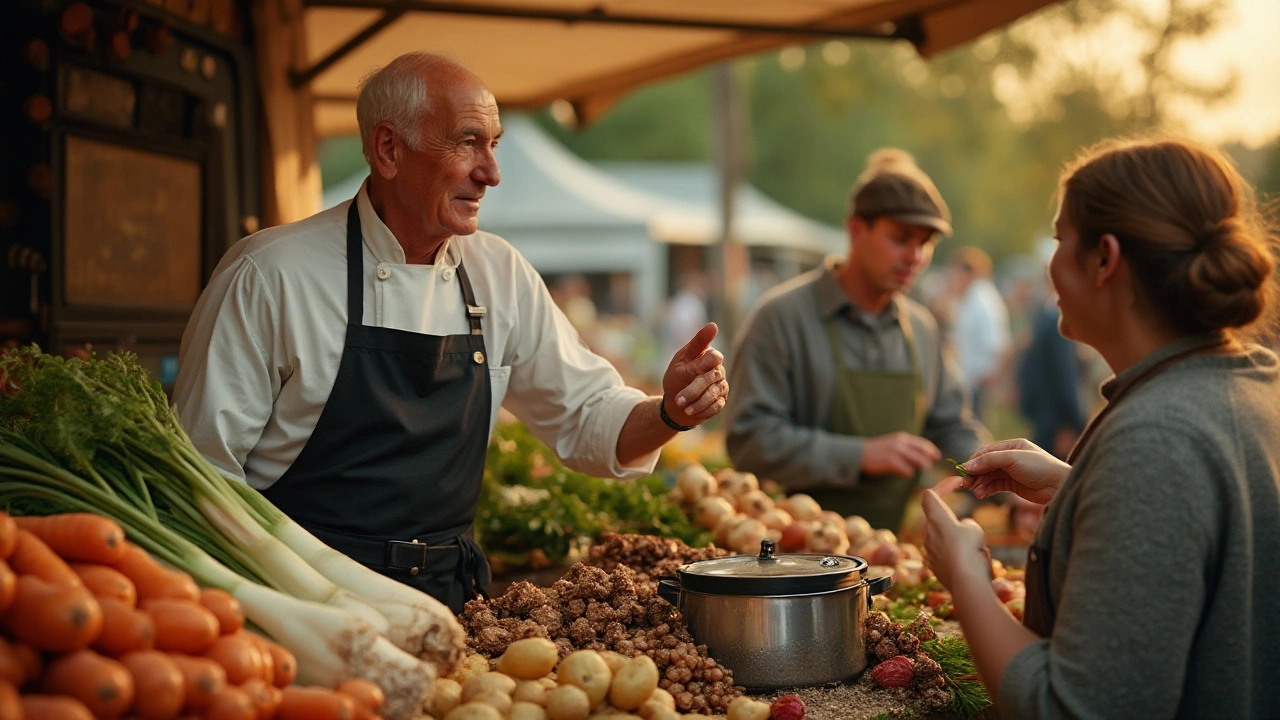
Traditions in Professional Kitchens
In the world of professional cooking, the kitchen isn’t just a place where meals come together; it’s a realm rich with tradition and disciplines honed through generations. Chefs often work under the unspoken understanding that excellence is a dance between technique and time-honored practices. This ethos is deeply embedded in the choice of tools and methods they employ, creating a preference for techniques that allow them to engage more intimately with their ingredients.
The absence of pressure cookers in many restaurant kitchens often boils down to an appreciation for what can be achieved through slow, deliberate cooking. Think about the delicate art of making a consommé, for instance, which requires hours of gentle simmering to develop its clarity and depth of flavor. This slow process encourages chefs to be present, tasting, adjusting, and perfecting the broth until it reaches its full potential. In this way, time becomes a critical ingredient that cannot simply be compressed without affecting the final taste and texture.
Many culinary experts liken the kitchen to a theater stage, where each dish is a performance that demands respect for ingredients and technique. By using time-intensive methods, chefs manage to enhance the natural flavors of the food, giving life to dishes in a way that captivates diners. This sensory experience extends beyond just taste; it involves sight, smell, and even sound, all of which can become stolen moments of creativity and expression. The unpredictability and tactile nature of these traditional cooking methods keep chefs intimately connected to their craft.
The Value of Traditional Methods
History plays a pivotal role in how chefs perceive and interact with various cooking techniques. Traditional methods like braising or roasting not only connect chefs to their culinary roots but also help in crafting a narrative through food that diners can deeply appreciate. Such methods allow cuisines to remain rooted in their cultural identities, providing a canvas on which chefs can paint with the brush of lineage and legacy. As famed chef Julia Child once said,
"In cooking, as in all the arts, simplicity is the sign of perfection."This statement underpins why chefs often prefer slower, more methodical cooking techniques to hastening processes.
Moreover, the camaraderie in a professional kitchen also contributes to the aversion to pressure cookers. Working alongside other chefs to coax flavors through methods like traditional French cooking creates bonds, shared knowledge, and collective creativity. There's a certain beauty in the 'mise en place' philosophy, where meticulous preparation lays the groundwork for each culinary endeavor. The precision and cooperation required in such settings are often perceived as vital learning experiences that shouldn’t be undermined by shortcuts.
Some restaurants take this adherence to tradition even further by creating entire menus inspired by historical cooking techniques. The charm and authenticity that come from such experiences are difficult to replicate with modern gadgets. Patrons come looking for an experience that’s tangible, that tells a story on their plates. Thus, for chefs, honoring these traditions is not just about respect for history but a commitment to offering authenticity and depth with each dish they serve. While the industry continually evolves, it’s these deep-rooted practices that ensure a rich, soulful touch remains in their culinary endeavors.
Tips for Home Cooks: Using Pressure Cookers Wisely
In the realm of home cooking, pressure cookers shine with their promise of saving time and energy. But unlocking their full potential requires a bit of know-how, particularly for those who want to replicate some of the experiences professional chefs cherish with more traditional methods. For starters, it's crucial to understand the mechanics of a pressure cooker to use it wisely. By trapping steam, these devices significantly increase the cooking temperature, cutting down the time required to tenderize meats or soften vegetables. However, this rapid cooking process can sometimes lead to an elusive moment where food goes from perfect to overdone before you even blink. Therefore, timing is of the essence when using a pressure cooker.
One of the best tips for home cooks is to start with recipes specifically designed for pressure cooking. These recipes provide guidelines for ingredient amounts, pressure levels, and cooking times, reducing the guesswork significantly. As you gain confidence, experimenting with your own modifications becomes more intuitive. Remember to use sufficient liquid to generate steam, usually about a cup is necessary unless specified otherwise. Overfilling is a common pitfall, as it can lead to unsafe pressure build-up and less flavorful results due to limited evaporation. Keeping beneath the maximum fill line indicated in your pressure cooker manual is a safety precaution you should never ignore.
"A watched pot never boils, but an unwatched pressure cooker could ruin dinner," quips a notable kitchen safety expert, reminding us of the vigilance required in culinary adventures.
Don’t underestimate the importance of the release method. Pressure cookers typically offer two release modes: natural and quick. The natural release lets the pressure subside gradually, which is great for dishes that benefit from continued cooking like post-pressurized stews and soups. In contrast, the quick-release method is ideal for vegetables where overcooking can turn vibrant greens into dull mush. Here, home cooks can control texture post-pressurization, allowing for that restaurant-quality bite while avoiding the common pitfalls of mushy or dry finishes.
Let’s talk flavors—especially how to maintain them in a closed environment where evaporation, and thus flavor concentration, isn’t as prevalent. Searing meat before pressure cooking can introduce deeper flavors, akin to those developed through slow roasting or braising. This caramelization, known as the Maillard reaction, isn’t possible under pressure, so it must be achieved prior. Don't shy away from spices as they infuse beautifully when pressurized. But take care with herbs; they can be overpowering due to the intensified environment or lose vibrancy if added too early.
| Estimated Time Savings | Culinary Technique |
|---|---|
| Up to 70% | Tenderizing meats |
| Up to 50% | Cooking legumes |
Lastly, clean up remains a manageable task if you maintain regular upkeep. Gaskets and valves require careful attention to prevent blockages which could affect cooker performance or safety. Regular inspection keeps your gadget running smoothly and maintains the precision needed for culinary experimentation. Adhering to the manufacturer’s cleaning instructions can prolong the life of your cooker, ensuring it continues to serve speedy and delicious meals for years to come.
